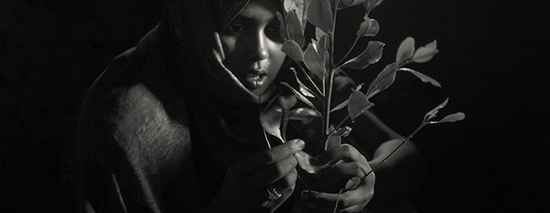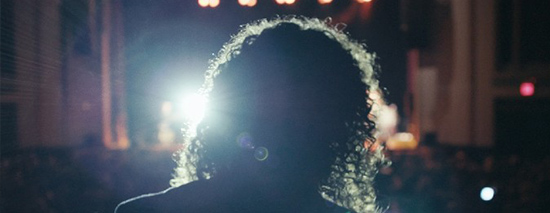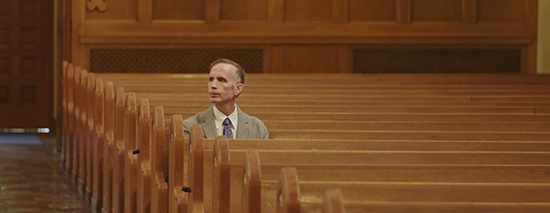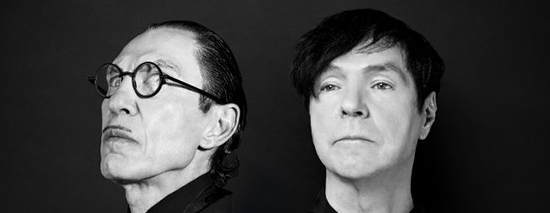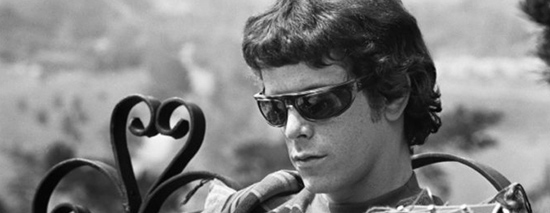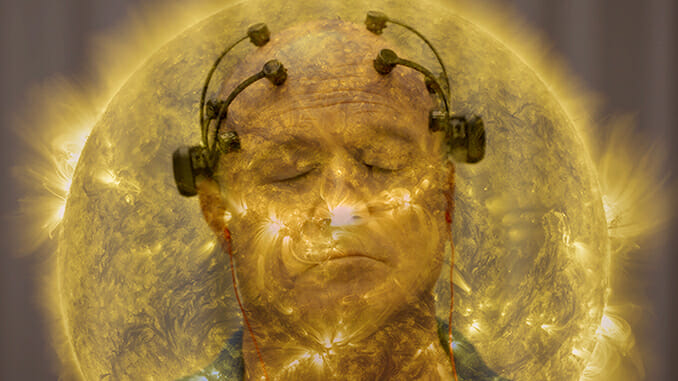
The pandemic, natural disasters, environmental nightmares, political violence, immigration, grief, blah blah blah—there is no end to the human capacity to document pain, and no end to our readiness to put a huge digital screen between our lives and the suffering of so many others. Non-fiction cinema, the ostensibly cheapest and easiest form of content, thrives in an age of streaming bounty, drowning your favorite streaming service in exploitation and unearned celebrity. I swell warmly with the misery of people I’ve never met. Still—that’s OK! This new on-demand ecosystem has allowed wonderful services like Mubi and Kanopy and OVID to grow, specialty platforms that provide filmmakers who would otherwise only see festival play an opportunity for bigger audiences, while encouraging behemoths like Netflix to invest in such voices as Robert Greene’s. That makes finding the best documentaries of 2021 all the harder, but all the more enjoyable.
But nowadays non-fiction filmmaking has to contend too with the atomization and isolation of the way we live, work and consume. It’s no great heroic gesture to lament the death of empathy in modern America; imagine living alone through all of this, waiting for life to resemble something normal.
The following films navigate that liminality with grace and curiosity. I cried through most of them.—Dom Sinacola
Here are our picks for the 25 best documentaries of 2021:
499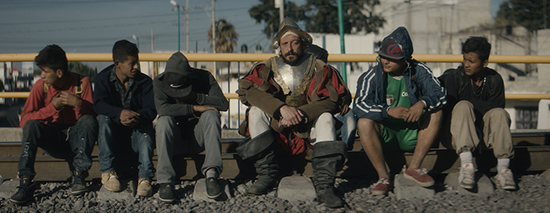
Though weighed with a carapace of somehow un-rusted armor, a Conquistador (Eduardo Sanjuan) washes ashore in present-day Mexico, the Atlantic Ocean and nearly 500 years of colonial oppression tumbling dreamily behind him. Unstuck in time, he begins marching back towards the capital, Tenochtitlán, his memories about conquering the Aztec civilization with Cortez conveyed in intimate voice over as he traverses coastal communities and the highlands and assorted urban sprawl, trying to piece together his past through making sense of the future unfolding around him. He yells at uniformed school children, waits in line for food, falls into a highway ditch and discovers the wonder of urinals, but any potential for farce quickly vanishes. Everywhere the Conquistador goes, locals (referred in the film’s credits as “Real People”) tell their stories of losing loved ones to violence, to gangs or cartels or corrupt officials, to government neglect or casual hatred. Many of the faces director Rodrigo Reyes shows us, faces the Conquistador comes upon, are Indigenous, are descendants of the people he once attempted to destroy. We hear: “They have so many ways of showing us, and making sure that we understand, just how much they hate us.” Gradually, the tales the Conquistador tells himself—his previous life tessellating the present the closer he gets to Mexico City—inform the tragedies he witnesses throughout. A woman describes the horrific details of her daughter’s death; a masked, anonymous outlaw gives the Conquistador a gun so he can confront the encroaching sins of his past. In 499, Reyes weaves the intimacy of verite into the gauze of fantasy, crafting a documentary of rare breathless depth. —Dom Sinacola
Out of the many striking shots captured in the docu-fiction hybrid A Cop Movie, one conveys the essence of director Alonso Ruizpalacios’ examination of Mexico’s police force unlike any other. After tying her wrist to a long, flimsy piece of rope, police academy trainee Teresa prepares to jump off of a 30-foot diving platform and into a swimming pool. It is the last challenge she must overcome in order to graduate—that of “decisiveness”—but poses an enormous threat to her life as she cannot swim, her likely fate of drowning callously counteracted by keeping her wrist tethered to land. Interestingly, Teresa turns out to be less of a documentary subject and more of an avatar for Ruizpalacios to survey the civilian perspective of the country’s police force. Presented as the honest central subject for nearly half of the film, Teresa (who is based on a real person) turns out to be played by actress Monica del Carmen, who has expertly molded herself in the real-life officer’s image, reenacting memories from her days as an academy student to her most recent workplace woes patrolling the streets of Mexico City. At her side is fellow actor Raúl Briones, who portrays Montoya (also a real guy), the second half of the duo dubbed “the love patrol” by other cops due to their flirtatious relationship as partners. Though initially presenting themselves as two officers simply doing their best within a crumbling system, the second half of the film makes it clear that these sentiments are only the biased projections of their real-life counterparts. Through carefully crafting this illusion and then stealthily unveiling the hypocrisy behind it, A Cop Movie is subtle yet audacious in its indictment of police corruption and the individual officers who buy into it—their good intentions be damned. —Natalia Keogan
All About My Sisters
Director Wang Qiong turns her camera toward her most intimate, domestic space in her stirring feature debut. At a three-hour runtime, Wang’s desperate yet measured search for truth and healing helps time melt by, with sisterly love sustaining a smoldering wick that burns brightly until the very end. Though its title suggests that the film is equally concerned with the lives of both of Wang’s sisters, its gaze is undeniably affixed to youngest sister Jin, who was abandoned by her parents at birth during the height of China’s “One Child” policy in the ’90s. The first week of Jin’s life was spent on the side of a rural road, enduring bitter cold and soaked in her own excrement. She was eventually taken in by an uncle—her mother’s brother—and his wife, who themselves had previously sacrificed children in the name of the national policy. For this obvious reason, Jin always refers to her biological parents as “aunt and uncle,” even referring to them as “your parents” when speaking to her siblings—despite the fact that she has been reintegrated into her birth family’s home since high school. As one can imagine, the compounded guilt, trauma and resentment over the ordeal continues to run deep in the family’s bloodline, passed down even to Jin’s own son and, perhaps most explicitly, to the younger brother born a few years after Jin was abandoned by her parents. Encompassing much more than a thorny familial history, Wang’s All About My Sisters examines class, patriarchy and human rights violations through the lens of her own family’s struggles (and small privileges), a somber yet enlightening experience that wields empathy as its principal weapon. Not a screed nor manifesto, the film is merely a saccharine portrait of real life’s complexity, tragedy and lack of simple resolve. —Natalia Keogan
All Light, Everywhere
The camera is a gun according to Theo Anthony, director of All Light, Everywhere, a patchwork documentary which blends interviews, archival footage and even scenes from the film’s cutting room floor in order to dissect the omnipresence of video surveillance—particularly in Black communities which have long been over-policed. Anthony’s filmic medium appears paradoxical considering his vested interest in critiquing the omission of unbiased truth inherent in camera footage—particularly those recorded by police body cams, covert aerial surveillance programs and panopticonic corporate workplaces. But as the director peels back the layers of his methodology, the viewer observes unpolished glimpses of Anthony setting up shots, prepping subjects for interview and divulging research logs—a technique that shatters the illusion of objectivity altogether. Through obliterating the guise of impartial filmmaking, Anthony examines the insidious history of image capturing as a tool of incarceration and its continued weaponization by the state. It is a self-fulfilling prophecy: Heightened surveillance in minority communities proliferates a high rate of crime—with infinite eyes scanning for crime, more crimes (predominantly minor offenses) are reported and prosecuted. Without the amplification of these invasive practices in affluent white communities, the false narrative of crime-riddled cities—like Anthony’s hometown of Baltimore—is infinitely reinforced. Perhaps the most insidious use of surveillance technology evident in All Light, Everywhere is the intentionally grainy, indeterminate nature of body camera footage itself, the argument being that if the cameras are too perceptive, too unbiased in their ability to document altercations between police and citizens, they might sway courtrooms to see the police’s actions as irresponsible or negligent. After all, if the jury can clearly see that a victim of police brutality was indeed holding a water gun instead of a deadly weapon, how could cops be expected to take accountability for their mistakes? If the premise of authoritarian monitoring isn’t terrifying enough, a scene involving AI-generated faces—composites of would-be individuals (or criminals)—pushes All Light, Everywhere into overt horror. Not just through the uncanny, skin-crawling quality of human non-humans, but by effectively presenting the evil inherent in these technologies when utilized against citizens by corrupt institutions. —Natalia Keogan
The American Sector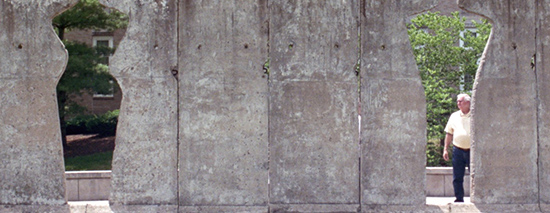
In The American Sector, directors Pacho Velez and Courtney Stephens venture across the country to film each segment of the Berlin Wall housed in the United States. A film with such a simple and clear structural conceit could have, in other hands, been rather sterile, but Velez and Stephens are attuned to the life around these monuments. It’s a film full of charming impromptu encounters in the strange places the wall has landed: outside a Georgia restaurant, inside a Microsoft building. But as much as it explores these oddities, it also uses the wall to engage with people, many of whom see the camera as a sounding board, an ear to listen to their life stories or ideologies. A retired veteran fishing on a lake outside of Fort Leavenworth, Kansas, muses on his service and concludes: “The only combat I want is combat with a catfish.” For many, the wall represents freedom. In Cincinnati, just across from slave-state Kentucky, a Black man is moved by the idea of breaking through borders to freedom. One woman speaks of God ordaining borders and her support for walls (“He has a whopping big one in heaven”), while at another point a woman from the Oglala Sioux tribe wanders around the monument with her children, the responsibilities of parenthood not letting her linger or reflect too long. The American Sector is full of such perspectives and contrasts, often revealing the contradictions inherent to how we commemorate history and our individual responses to that commemoration. As each subject reflects on the wall, a fascinating cross-section emerges—that of how Americans see themselves and how Americans see history as relevant to the principles that guide their everyday lives.—Daniel Christian
Ascension
In which we find Dan Deacon, of late just totally thriving in the realm of documentary scores, potentially realizing his life’s calling by writing music for a scene of sex dolls undergoing rigorous quality control. And the Godfrey Reggio to Deacon’s Philip Glass is director Jessica Kingdon, whose debut feature documentary profiles—in grand, sometimes enthralling and sometimes intimately small vignettes—a modern, restless, ever-changing Chinese society, part monolith and part vast, teeming ecosystem of every facet of human progress and life. Joined by Nathan Truesdell, Kingdon sets her camera on work and play alike, scouring overcrowded water parks and denim jeans factories and all the Chinese streets and markets and thoroughfares between, looking for overarching patterns and reason, defining the so-called “Chinese Dream” for people in thrall to forces with power far stronger than whatever’s wielded by a dad trying to keep track of his kids in a wave pool or a woman carefully trimming a sex doll’s pubes. These are still important responsibilities, for what that’s worth, but their importance is insignificant compared to human civilization’s greater surge upwards. Capitalism and the exploitation of labor are nothing new to behold, but in Ascension Kingdon makes them feel chthonic.—Dom Sinacola
Delphine’s prayers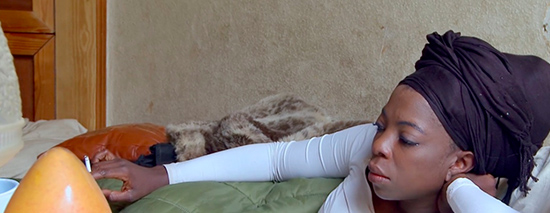
When we meet Delphine, though she’s in her early 30s and looks even younger, it feels as if she’s in the middle of her life too. In long monologues, punctuated by practiced puffs of one cigarette after another—lit by the film’s throughline, a bright orange lighter—she tells us who she is. Delphine’s prayers takes place in one room in one apartment, but it begins in poverty in Cameroon, director Rosine Mbakam’s storyteller stumbling in and out of pidgin, then French, then pidgin again, all depending on where the narrative takes her. Though Mbakam’s camera, and Mbakam herself, never leave Delphine’s cluttered Belgian flat, every moment is compelling. Delphine is a natural, and she seems to know that. She uses it, works with it—has earned it—and that influence extends to the director. If anything Delphine tells us is exaggerated, we understand the truth beneath the embellishment; if anything she tells Mbakam is fabricated, Mbakam at the very least appreciates how much the fabrication keeps Delphine’s story moving. From the first moments of Delphine’s prayers we can gather that Mbakam is old friends with Delphine, but eventually learn that they didn’t meet until they were both African immigrants in Europe. Otherwise, they would have never crossed paths at home in Cameroon, hailing from different social strata. Belgium equalizes them. There they are both outsiders, and that is all they are to many. Delphine describes becoming a sex worker at age 14 to make money for her family, then marrying a European to continue supporting her family and moving to Belgium, but still needing to turn tricks now and then despite her husband’s income—their marriage clearly loveless and her body still at the mercy of white sexual colonization. Then Delphine breaks into full-on religious invocation in the film’s final moments, breathless as she finally lets herself be vulnerable, begging for forgiveness. She must have done something to deserve this life. She’s sorry.—Dom Sinacola
With editors Jeanne Applegate and Dustin Waldman, Jessica Beshir’s debut documentary feature is a lyrical representation of the Harari people of Ethiopia, focusing especially on the region’s young, who long to gain some semblance of freedom from their home. Though Faya Dayi is ostensibly about the industry surrounding khat, Ethiopia’s chief export, and the ways in which it suffuses and shapes daily and religious life, the film eschews historic context for the barest essentials needed to give us a few emotional throughlines. Mostly, we shift dream-like between quiet vignettes and more ambitious moments of symbolism and gorgeous abstraction—vultures and blackbirds, smoke and steam, non-diegetic sound and foley work, our many characters framed in ways to draw attention to the frame, not the content. Beshir films everything in carefully textured black and white, lending both breathless intimacy and a hushed awe to every image, be it mundane or broadly imagistic or whatever. The sumptuousness of the film, gently paced and occasionally overwhelmingly oneiric, mimics the sleepy effects of the khat chewed throughout. Soothing cinematography belies the systemic oppression, poverty, and death we sense at the core of the Harari experience. Composed in part by William Basinski—a musician a bit obsessed with sounding out physical decay and the deep ecological wounds of capitalism—cavernous dronescapes drape a semi-conscious sheen over urban wanderings and forest naps alike. All of it feels not quite real. “Everyone chews to get away.” Mildly sedated, we’re carried swooning from person to person, from chores and meals to errands and jobs and visits and hang-outs. We watch the wall of a mud structure come together, literally, and elsewhere we sit with a man mourning a tragedy. People are often singing. Ever elsewhere, the camera slowly tilts up to reveal a truck that’s clearly tumbled from the winding mountainous roads over the edge. We know that one of the teens returned from his escape to Egypt to be with his mother after his father’s sudden death. Was his father driving a large load of khat bundles to the city along the treacherous roads, losing control in the dark where sharp turns come out of nowhere? We’re rarely afforded explanation or resolution. In the absence of a framework, we build our own. Like RaMell Ross’s Hale County This Morning, This Evening, Faya Dayi wanders lovely, liminal spaces between narrative and fairytale, between documentary film and something looser, something personally vérité. Like the films of Khalik Allah, Faya Dayi feels like a diary assembled from found sound and silent home movies, arranged into an ethnographic account of a specific, special place.—Dom Sinacola
Flee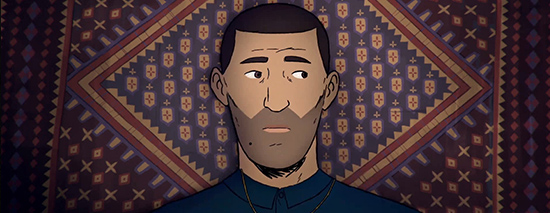
“Flee.” It’s an imperative, a one-word title telling the audience what a person has to do to save themselves from cultural takeover by barbarians with too many guns: Get the hell out of Dodge. Run for your lives. Flee. Danish documentarian Jonas Poher Rasmussen’s new movie animates the truth of one man, Amin, Rasmussen’s friend, who for the first time in his adult life (and in his relationship with Rasmussen) has decided to open up about the time he and his family cut town when the Taliban took over Kabul. Being an everyday non-fundamentalist person in Afghanistan is hard enough with those lunatics in control. Being both everyday and non-fundamentalist and a closeted young gay man is worse. And that unavoidable bleakness softens and sharpens through the film’s presentation. Using animation to reenact Amin’s perilous journey from Afghanistan to Denmark, with stops along the way in Russia and Estonia, Rasmussen has a way of layering the stunning cruelty Amin endures and observes on the road to safety with an electric playfulness: Even the worst real-life images gain a certain exuberance when recreated by hand. But the film comprises Amin’s recollections, and human memory being what it is—simultaneously faithful, fuzzy and faulty—the casual alchemical qualities so intrinsic to animation as a medium pull those recollections into harsh relief. Maybe this is the only way Amin can face his past. Animation also has a way of feeling more alive than live-action, or alive in its own separate way, which makes Flee’s darkness all the darker. Most of all, Rasmussen is letting Amin tell his story his way. Animation only ultimately acts as a veneer. Even through the layers of artifice, what this movie shows us may be one of cinema’s most harrowing refugee stories.—Andy Crump
From the Wild Sea
Robin Petré’s From the Wild Sea consists of observing people as they work—performing menial and taxing tasks, staying organized and professional, confronting disappointment, cleaning, maintaining. Our gaze is often kept stationary as we absorb the process of people doing their jobs, unblinkingly. It can be hard to watch, because staring at anyone fulfilling the role of “employee” is a fundamental reminder of one’s own meaninglessness and mortality, but also because anchoring most frames is an image of an animal (seals, swans, dolphins, whales) in peril, a sense of striking, squealing vulnerability laid bare in long, typically up-close takes. As Petré follows animal rescue workers at Seal Rescue Ireland and British Divers Marine Life Rescue, listening as they describe the scraps of plastic found in rescued seals (since died) or provide a clinical narrative for all the abuse inflicted on a dolphin’s corpse, the film is unambiguous. These are short lives caught in stylized shots of seal pens lit by beet-red nightlights. The helplessness of the creatures cuts deeply. The images of suffering speak only for themselves, little explanation offered as to why so many animals wash up on shore, spit out by their ecosystems. Likewise, Petré offers the audience no solace in scientific didacticism. (We know, anyway, that this is our fault.) Instead, she submerges the viewer into the mundane and unpleasant labor of such environmentalism. A scene of a seal struggling to breathe as a worker climbs on its back to intubate it, our whole view glued to the animal’s head pinned between the worker’s legs, is palpably emotionally distressing stuff, but it’s also clearly exhausting. Efforts to return “patients” to the wild don’t always turn out disastrously, but they are always that—effort—and in chronicling the daily struggle to help these animals, From the Wild Sea mostly documents a story of slow, tiring disaster. Around the edges of these quietly intense vignettes, scored only by the bleats of seals or the dying breath of a beached whale suffocated under its own weight on shore, there looms the notion that, despite their best intentions, these organizations may be doing more harm than not. Still: This is all they can do. In one scene, a worker at the rescue facility tries to keep birds from snatching the frozen fish doled out to the seals in the enclosure. She mostly fails. A sign behind her reminds visitors that this particular enclosure is sponsored by Brita water filters.—Dom Sinacola
Her Socialist Smile
Everyone labeled Millennial and older will likely remember Helen Keller’s story as one of inhuman or maybe hyper-human-perseverance, of someone overcoming the unimaginable to inspire countless generations to never give up, or something. John Gianvito’s Her Socialist Smile pushes beyond Americana, beyond Keller’s mythos to explore her writing, activism and, ultimately, her popularly uncelebrated populist character. Beginning in 1913 with Keller’s first time, well into her 30s, speaking in public, Gianvito has poet Carolyn Forché (a fellow progressive American luminary) read a prepared narrative, as well as Keller’s speeches in voice over, the words stark white over a black background. Intoxicatingly tangential images, mostly pastoral and wonderfully tactile alongside Forché’s voice, form bridges between Keller’s speeches, all gorgeous and alive with socialist revelry and functional leftism. As her ideas mature and gain experience, Her Socialist Smile expands on Keller’s incredible biography, re-shaping her image as a figure of American moralizing while never losing track of Gianvito’s own intentions. After all, he’s telling a story about Helen Keller too, albeit a leftist-leaning one. The more we attempt to examine a life, the more we mold its story to fit our own.—Dom Sinacola
The History of the Atlanta Falcons
If the 220-minute The History of the Seattle Mariners investigated baseball, and therefore professional sports, as an absurd but monumental folly played out over decades, then with this, the 413-minute opus The History of the Atlanta Falcons, Jon Bois and Alex Rubinstein use a different franchise in a different sport on the other side of the continent to zoom out even further, to indict the cruelty of a universe indifferent to the meaningless conflicts of men. As Bois says early in Falcons, “These are almost never stories about good people and bad people. Winning in the NFL isn’t about drawing in the lines and hoping for the best. It’s about picking a distant point, marching towards it, and accepting whatever comes of it.” Baseball makes no sense; the NFL represents humanity’s irrevocable, violent lurch toward oblivion. Joking around the existential bleakness, Bois introduces a cavalcade of weirdos that only the lavish wealth and fame of professional sports could provide, occasionally zeroing in on such exceptional numb nuts as former head coach Jerry Glanville (“Jerry Glanville was known as ‘the Man in Black,’ which is something you want people to call you when you’re five”), who Bois describes dressed like “two eight-year-olds’ poorly conceived plot to sneak into Showgirls”), or another dumb former head coach Bobby Petrino, who Bois labels “America’s dunk tank clown,” then adds, “and in that way he’s indispensable.” From the franchise’s first season to the Falcons’ heartbreaking Super Bowl LI loss to Tom Brady’s Patriots, Bois and Rubinstein, with interludes by Atlanta native Joe Ali and SBNation editor Kofi Yeboah, trace the arc of the team’s record along the wing of the Falcons logo, building their story in simple geometric shapes, vast red lines, unbelievable numbers, and infinite digital space. When they call a 100-yard interception one of “the biggest plays [they’ve] ever seen,” they have precise statistics, presented clearly, to back that up. When they assert the unique specimen that is Deion Sanders, they show on Google Earth how geographically rare his accomplishments truly are. When Bois concludes, “…I suppose it will all make sense when we grow up,” he’s got the swathe of history and some seven hours behind him, countless charts and graphs and percentages, mounted scalably and told hilariously, that document the chaos math of caring about this team. Of caring about anything this much at all. —Dom Sinacola
Just Don’t Think I’ll Scream
At some point in—simultaneously much too far into and seemingly only in the shallows of—Frank Beauvais’ Just Don’t Think I’ll Scream, he follows a liturgy of grievances with a description of a piece of art that has touched him deeply:
“I See A Darkness,” Bonnie ‘Prince’ Billy’s lament, haunts me. It pierces me, caresses me, consoles me, saddens me. It goes away, I get closer, run from it, it runs back, turns into a handkerchief, a shroud, an amulet, a cloud, a storm, a companion in misfortune.
I was taken aback: I too have listened to this song at my loneliest, put it on in the opaque shadows of a place in which I lived by myself and let that dearth eat at me. I’ve backed into its corners, cried into its crenellations, but only here, watching this movie, did I feel like someone finally understood what this song meant to me. This is the liminal hope and anxiety Just Don’t Think I’ll Scream inhabits. Written from 2016, Beauvais’ film chronicles the director’s isolation in France’s rural Alsace region, abandoned by a lover and left to his own solipsistic devices. He watches movies addictively, having erected an “illusory wall” of film to stand between his fragile ego and the encroaching horrors of the outside world. His father’s death preludes the terror attacks in Paris, then the Pulse nightclub shooting, then a weekly parade of human savagery—all the while Beauvais recites diary passages in controlled voice over as clips from the 400-some movies he obsessively watched both give depth to and distract from his personal travails. He climbs out of his alienation, plans to move to Paris, purges the bulk of physical artifacts he’s collected, the thousands of vinyl and DVDs and media, telling himself, “I don’t define myself by what I own. My identify doesn’t consist of shelves.” We attempt to recognize the vast, winding vein of films he mines: Elf, Christine, Sergio Martino’s Torso, Maniac Cop, Popstar: Never Stop Never Stopping, Ingmar Bergman’s A Ship to India and Scorsese’s Age of Innocence, or Bertrand Bonello’s recent Nocturama. He mentions a fleeting horniness to download hundreds of post-war Soviet titles, of which I only clock The Cranes Are Flying, but maybe I’m wrong. There’s even an esoteric find like Alain Giraudie’s Staying Vertical wandering in the vicinity of Sully and A Perfect World. Quickly, the urge to track the films, and the inevitability of failing to recognize most, falls to the desperation of justifying one’s urge to try at all. You let it wash over you, these already oddly interstitial frames, only the occasional shot one that couldn’t be anything else—from Funeral Parade of Roses, for example. You know the one. Beauvais continues to lament the chaos of the planet, lucidly aware of but unable to control how much of a bummer he must’ve been for his friends. He wonders how his love for film can be justified when it’s such an intrinsically passive addiction, one that drives him further into himself. Is he only condoning his affliction, fortifying his antisocial tendencies? Just Don’t Think I’ll Scream is a reckoning with cultural obsession. Is bearing witness enough? Are cinephiles cowards, ready to watch but never ready to intervene? In an age of access and isolation, the film confronts that guilt: “Adulthood,” Beauvais realizes, “is learning to live with the inevitable.” I gave up early in Beauvais’ film identifying much of what I was seeing. Art helps us accept that which we cannot control. It quells the voices within us. It gives us enough to keep us from screaming, I guess. It’s a companion, at the very least, when we’re feeling most alone.—Dom Sinacola
Landfall
Hard enough bearing witness to the atrocities endured by Puerto Ricans in the aftermath of Hurricane Maria—but Landfall becomes near unbearable when director Cecilia Aldarondo takes us to Rincón, a resort destination on the west coast of the island, into the company of hollow-eyed white men with the world’s most egregious facial hair. These are cryptocurrency investors, swooping into the devastated island while the federal government refuses to correctly count the bodies of the dead, while Trump limply tosses rolls of paper towels at faces still frozen by shock. They are guys named “Quinn” and “Brock Pierce,” buttressed by millions, claiming that the block chain represents a new dawn for Puerto Rico. Locals eventually fall silent as these outsiders talk over them, tell them how they can best rebuild their broken home. Locals know there’s no arguing with a rich twerp named Brock who saunters into a conference room drunk on ahistoricism, wearing a poncho and cartoonishly large playing cards peaking shard-like from the band of his feathered fedora. Better to take to the streets. Chronicling the near-two-year period between the hurricane’s landfall and the ousting of Governor Ricardo Rosselló in July 2019, Landfall wanders the island to watch a small community in the highlands rebuild a school into a socialist gathering place, a small group of farmers detail their alienation, a small dinner party of young people discuss their fears, a man quietly tell of how the hurricane decimated his small home. He tried to grab his cat as he fled, but the cat was too scared. Aldarondo asks him if the cat survived. “Yes, but she won’t look at me,” he responds, “My cat became a different animal.” Aldarondo, a Puerto Rican filmmaker, poses Landfall as a recollection of this transformation, cinematographer Pablo Alvarez Mesa sketching out the people’s psychic pain through long shots of the island’s picturesque beaches or lush mountain roads scarred by wreckage and loss. Boisterous protests in San Juan give way to the pregnant silence of empty resorts, of luxury existing to comfort no one, or pallets of water bottles, overgrown with weeds and undelivered to villages cut off by dilapidating infrastructure. Landfall’s images are often as bracing as they are beautiful, postcard vistas overlaid with generations of colonial violence and neglect, tech bros in overlarge board shorts buying up land haunted by too many forgotten ghosts.—Dom Sinacola
Kenny G is aware that he’s less a personality to people than he is a sound. And that sound might be as divisive as sounds get, having at once made the 65-year-old a preposterously rich man and a decades-long cultural punching bag. Listening to Kenny G, a new documentary from Hail Satan?’s Penny Lane (and serving as part of HBO’s Music Box docuseries), sets out to finally untangle the man from the meme. But as it becomes clear that the two are quite happily fused together, the edges having been smoothed out a long time ago, she’s forced to take the whole curly-haired mass seriously instead. However convincing a pair Kenny G and his instrument make, we learn early in Lane’s film that what he’s truly horny for is the idea of craft. He’s meticulous in the studio, figuratively hacking at his audio files until they’re to his liking. But his choice of instrument—that he plays one in the first place, even—seems almost beside the point. “I don’t know if I love music that much,” he admits. More than anything, he’s a collector of skills, obsessed with the idea that you can master anything via practice and persistence—by “putting in the reps.” But the star’s overall ambivalence re: music is part of what makes Kenny G a frustrating figure for jazz critics and scholars, who make up the majority of Lane’s interview subjects. Another issue is that jazz comes from a rich musical tradition, one that the star doesn’t seem all that interested in. Though it’s a historically conversational genre, for instance, Kenny G acts as both caller and responder in his work. But jazz is also inextricable from Black American culture, a topic to which Lane devotes a significant chunk of the film, careful to not rush the discussion. Kenny G admits that he doesn’t give much thought to his own race, but, pressed by Lane, doesn’t take any convincing to agree that his whiteness was crucial to his commercial success in the jazz space. Like the film in general, the moment feels entirely earnest; you can practically see the cogs turning in real time. Perhaps a person as genuinely invested in self-improvement as this is also, to some extent, uncancellable as a public figure. The star’s perfectionism makes the film fascinatingly self-reflexive. “I think that people like celebrities that get the joke,” he says. “Like, I get the joke.” —Sydney Urbanek
North by Current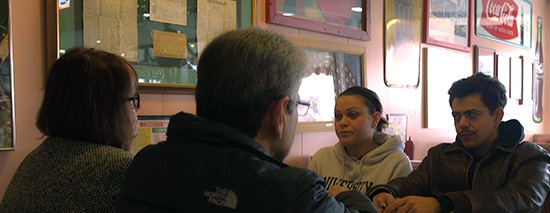
When director Angelo Madsen Minax returns to his rural Michigan hometown, having spent his formative years in Chicago, I can’t help but find bits and pieces of my life in the long stretches of wintry highway, snowdrifts piled endlessly, or the uninteresting, head-emptying nothing of Midwest travel Minax films so dutifully. Minax has crossed state lines often over the past five years, first because of the sudden passing of his young niece, then to be with his family during the subsequent arrest of his brother-in-law (then his sister’s boyfriend) and murder investigation. In North by Current, as Minax reveals the circumstances surrounding his niece’s death, so does he detail, with aching intimacy, his relationship with his deeply religious family and their church-going logging community. As a trans man, Minax still bears the anxiety and the weight of his parents’ response to his coming out, and throughout the film that question haunts the quiet moments he spends with his family: How could his mother ever compare his niece’s death with his transition? How could her grief bring her to that point? No wonder he escaped. I grew up in Michigan, sought to get away as soon as I could, moved to Chicago when I was 17, then seven years later moved even further, out to Portland, abandoning any relative closeness to my family that remained. I’ve spent the past 20 years searching myself for why, or what—was I leaving Michigan, or leaving my loved ones? Though the truth behind the tragedy hides true-crime tendencies, Minax unveils details elegantly, capturing the contours of his family history with honesty and compassion. His Michigan is a microcosm of the kinds of places so many of us leave behind—a full insular world of four well-defined seasons and whole lives lived within square miles—and the places to which we’ll always return. Always: compelled by nature and guilt and the need to rediscover where your old life ends and your new one can begin. North by Current knows that compulsion well.—Dom Sinacola
Notturno
Filmed over three years in ISIS-adjacent combat zones, Gianfranco Rosi’s Notturno is concerned with those who live in the wake of—and who are still surrounded by—unimaginable violence. In characteristically remarkable and decisive frames, Rosi approaches his images with a sense of quiet and calm, offering unflinching yet dignified portraits of grief. It is a patchwork of a region in stillness, capturing lives continuing in a sort of calm after the storm. In some cases, subjects attempt to process trauma by first giving physical shape to it, whether it’s a class of elementary-aged children drawing pictures to process what they’ve seen and endured, or a group of grown men in a psychiatric hospital writing and performing their own play in response to the devastation around them. In other cases, death lingers as a figment in the distance, gunshots and sparks always on the horizon, but in the foreground, again, stillness: A duck hunter takes his canoe through placid marsh waters between dusk and dawn, his trip lit orange by fire somewhere on the horizon; a boy fetches birds gunned out of the sky and makes a solitary trek home. Death is always present, looming off screen or in the distance: ducks, birds, the earth aflame. In one of the most difficult scenes to watch, a mother listens to old voicemails from her kidnapped daughter, now likely deceased, and death again lurks beyond what we can see. Yet Notturno steers entirely clear of the sensational. Rosi’s assured approach carries a somber serenity, and the care behind his images allows those before the camera the dignity they deserve.—Daniel Christian
In his films, Robert Greene has tried to bring the alienated past into the present. Kate Plays Christine, from 2016, uses Kate Lyn Sheil’s preparation to play Christine Chubbuck—the newscaster who died by suicide on air 42 years earlier—in part to navigate an actor’s responsibilities when trying to resurrect a real person relegated to folklore. 2018’s Bisbee ’17 chronicled the reenactment, on the event’s 100th anniversary, of the forced removal and abandonment of more than 1,200 striking miners from their homes into the Arizona desert. As Bisbee community members take on the roles of both deputized corporate thugs and workers demanding better lives, in many cases inhabiting the personas of their own ancestors, they come to better understand the sway such history still holds over today. Even in Actress, Greene’s 2014 portrait of Brandy Burre returning to acting as she reinvents her personal life, re-evaluating the past is an act of taking control. When Burre slowly goes back on stage, engaging with old friends and with the visceral excitement of being in front of an audience, she begins to steer her life away from a toxic marriage and define herself anew. She realizes she’s no longer obligated to hold on to her old self. Procession, Greene’s latest film and his first for Netflix, is again about acquitting the present from the past. It begins with a 2018 press conference in Kansas City, Missouri. Lawyer Rebecca Randles stands with three of the survivors stating that they can call out more than 230 known Catholic clergy members in the Kansas City area part of a far-reaching network of sexual abuse. Seeing this, Greene reached out to Randles with the idea to use drama therapy, closely guided by registered drama therapist Monica Phinney, to give a small group of survivors the chance to transform their nightmares into something dramatic, to potentially transform their trauma into something survivable. Procession presents this approach: Six men scripting, storyboarding, location scouting and finally shooting their worst memories, however they want to interpret them, interspersed with the completed results. The young actor who stars in each of the segments, Terrick Trobough, spends much of the film in the company of the six survivors, hearing their stories and quietly, professionally doing his job. He witnesses them weep and punch things and disassociate, not because they’re fragile, but because they’re broken. Terrick responds that he believes their stories. Later, with Dan (one of the survivors) following an emotional moment, Terrick asks him, “How are you?” Maybe he’s just being polite, but Terrick’s small gestures of empathy glow brightly. As does Procession, when the beauty of Greene’s filmmaking satisfies the intelligence and clarity of his methods. “I hope the strength you showed is rewarded with peace and contentment,” another survivor tells himself near the end of the film, reaching decades into the past. A close-up of his face lets the audience know if that hope has been resolved. It’s very good kino.—Dom Sinacola
Bubble worlds and echo chambers, escapism and selectivity—perhaps the reason that first-time director Lance Oppenheim seems to understand The Villages retirement community so deeply is because its social elements resonate with anyone that grew up online. These social phenomena are, of course, not new, but they are a vital part of everyday life—political and otherwise—in a digital landscape. Approaching them and those that willingly seek them with open eyes and ears, but with brains enough to assess their motives, takes a savvy non-fiction storyteller. Oppenheim’s new documentary, Some Kind of Heaven, introduces the filmmaker as an exciting new voice as he unpacks the quintessential “got old and went to Florida” locale with visual beauty, deep empathy and the wizened charisma of its subjects. Built from his college thesis project, Some Kind of Heaven is a confident debut that follows a handful of Villagers: Anne and Reggie, a couple with a husband that’s used retirement to experiment with drugs and embrace ideas (like that he actually died and has been reincarnated) that estrange him from his extremely patient wife; Barbara, a full-time working widow stranded in a place that rubs her the wrong way; and Dennis, a con man living in his van on the prowl for a wealthy single woman to provide him a place in The Villages. Immediately, that supposed sense of uniformity—that designed sameness of aesthetic and experience that helped give The Villages its reputation as “Disney World for old people”—is revealed to be nothing but a front. And that’s before you really even start to meet the subjects. The film’s opening juxtaposes a diverse selection of primary-colored synchronized activities (swimming, golf carting, rowing) with voiceover that lays out the hyper-positive, hyper-choreographed façade that comes with living in the community. The Villages create the same kind of “see no evil” bubble that resembles the positivity-only fronts put on by internet personalities looking to create their own echo chambery cults. Unraveled here, it’s somewhere between Errol Morris’s loving look at eccentric Americana and a John Waters wet dream: Hawaiian shirts, polyester, tanned wrinkly skin, souped-up golf carts and elderly cheerleaders. These striking visuals continue throughout the film, with editing by Daniel Garber that transcends its (still slick) match cuts to a more elegant place of narrative flow between images. And Oppenheim knows just where to place everything. Cinematographer David Bolen’s framing centers and grounds its subjects when everything around them is designed to be a heightened escape from the inevitable reason they all came there: To die happy. Some Kind of Heaven leaves its subjects’ stories without ends—except the one end everyone knows is coming for us all—basking in the beautiful imperfect potential of an open door, an empty calendar day, a bare dance floor.—Jacob Oller
The Sparks Brothers is a thorough and charming assessment and appreciation of an idiosyncratic band, and the highest praise you could give it is that it shares a sensibility with its inimitable musicians. Not an easy task when it comes to Ron and Russell Mael. The Californian brothers have been running Sparks since the late ’60s (yeah, the ’60s), blistering through genres as quickly as their lyrics make and discard jokes. Glam rock, disco, electronic pioneering—and even when they dip into the most experimental and orchestral corners of their musical interests, they maintain a steady power-pop genius bolstered by Russell’s fluty pipes and Ron’s catchy keys. It’s here, in Sparks’ incredible range yet solidified personality, that you quickly start to understand that The Sparks Brothers is the marriage of two perfect subjects that share a mission. Experts in one art form that are interested in each others’, Ron and Russell bond with director Edgar Wright over a wry desire to have their fun-poking and make it art too. One made a trilogy of parodies that stands atop its individual genres (zombie, cop, sci-fi movies). The others made subversive songs like “Music That You Can Dance To” that manage to match (and often overtake) the very bops they razz. Their powers combined, The Sparks Brothers becomes a music doc that’s self-aware and deeply earnest. Slapstick, with a wide range of old film clips delivering the punches and pratfalls, and visual gags take the piss out of its impressive talking heads whenever they drop a groaner music doc cliché. “Pushing the envelope?” Expect to see a postal tug-of-war between the Maels. This sense of humor, appreciating the dumbest low-hanging fruit and the highest brow reference, comes from the brothers’ admiration of seriously unserious French filmmakers like Jacques Tati (with whom Sparks almost made a film; remember, they love movies) and of a particularly formative affinity for British music. It doesn’t entirely tear down facades, as even Wright’s most personal works still emote through a protective shell of physical comedy and references, but you get a sense of the Maels as workers, brothers, artists and humans on terms that they’re comfortable with. The nearly two-and-a-half-hour film is an epic, there’s no denying that. You won’t need another Sparks film after this one. Yet it’s less an end-all-be-all biography than an invitation, beckoning newcomers and longtime listeners alike through its complete understanding of and adoration for its subjects.—Jacob Oller
Swimming Out Till the Sea Turns Blue
With little context beyond base place names and proper nouns, Jia Zhangke’s latest documentary charts China’s rapidly transforming identity over the past seven decades. From one to 18, amorphous chapter titles (“Sound,” “Journeys,” “Disease,” “Mother,” or just a name: “Yu Hua”) oneirically attend to some archetype or passing theme, but for the ignorant Westerner—in other words: me and many readers here—they provide emotional anchors as Jia increasingly merges the past with the present. Or, at least, as he struggles to. Beginning at a lit fest in Jia’s hometown province of Shanxi, where generations of writers come together to help remember China’s many changing faces, Swimming Out Till the Sea Turns Blue focuses on three prominent writers—Jia Pingwa, Yu Hua and Liang Hong, each successively younger, their childhoods filtered through ever-altering shades of Chinese culture-connected by a literary tradition begun with Ma Feng, who wrote popularly of Chinese country life. As Jia interviews his subjects, their stories tell of coming of age during the Cultural Revolution or in the unrest that followed, simultaneously tragic and tickling, modern life typically intrudes. Occupying the real estate of every frame, phone screens scramble light, headphones in every ear and someone filming something; meanwhile, Jia juxtaposes shots from his earlier films with their current state, or catches old writers staring incomprehensibly at their younger counterparts. Whether Liang Hong’s 14-year-old son’s completely losing the dialect from the region where he was born, where his mother grew up, or a shot of a communal dining hall reveals rows of young people glued to their phones, the present always threatens to quietly extinguish the past. Nelson Yu-lik Wai’s cinematography captures the quotidian as an immersive depth of commotion and inner life, two chapters especially (“Journeys” and “Sound”) a showcase for montages that widen the film’s purview, presenting modern China as a mélange of contradictions and anachronisms. Swimming Out is something of a culmination of Jia’s work, then, a celebration of artists as those who, with the wisdom of time, preserve and presage history as they actively define it. He also wonders if they’re—and he counts himself here—doing a good enough job. Regardless, the sea is now clearly blue, no matter what text books once said. And Yu Hua can watch a Blazers/Nuggets game in public, on his phone, in peace.—Dom Sinacola
“[The Velvet Underground] had entropy within it,” one of the many talking heads featured in Todd Haynes’ documentary reflects, chewing on the ultimate fate of the band at the center of it all towards the end of The Velvet Underground. It’s true that the avant-garde artists Haynes details in his first doc were more a single moment in time that rippled outward, a doomed endeavor not meant to last in the most immediately tangible way. Lou Reed and his ragtag team of black-clad counterculture musicians were a single thread within the vast, wide-spanning fabric of 1960s New York City, rubbing shoulders with artists, writers and musicians, and leaving a mark that would see their influence last long after the band’s members had already parted ways. In this respect, Haynes (who may be new to documentary but, with Velvet Goldmine and I’m Not There, is no stranger to music movies) aptly paints a portrait of The Velvet Underground, albeit not with people unfamiliar with the band in mind. He never spends too much time in the past that led to their artistic zenith or the legacy that it would leave behind, or even allows much space for true linear comprehension of the band at all. Through a rhythm which may feel inaccessible to more casual listeners, Haynes nonetheless effectively reckons with the moment that the band entered the world and the moment that they vacated.—Brianna Zigler
The Witches of the Orient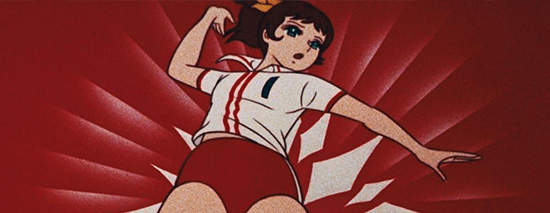
With a pulp’s sense of tension and a visceral respect for the ability of the human body to bitterly transcend all expectations, Julien Faraut’s The Witches of the Orient tells the story of the Japanese women’s volleyball team, the “Oriental Witches”—their magic manifest in their 238-game winning streak—as they capture their country’s heart and win gold at the 1964 Olympics. Though Faraut weaves key cultural detritus—manga and anime and Sports Illustrated profiles alike—with modern interviews and training footage and broadcast matches, the thrill of Witches is its montages: a big fat ole Portishead needle drop (“Machine Gun”) pathologizes the mechanical and trance-like nature of the team’s success, while anime films codifying their legend cut deftly between actual footage, women and cartoon alike eating shit at the behest of their humorless coach, a mythical figure of misogynistic determination. We know where this is going; these women with unflattering nicknames are going to win. But Faraut never loses focus of the mechanism of their success—like in Penny Lane’s Kenny G documentary from this year, “best” is defined as a quantitative standard, a matter of doing the same thing, over and over, until the body is calloused to the existential endurance test that is life. Faraut understands that the beauty of this story lies in its inertia.—Dom Sinacola
Woodlands Dark and Days Bewitched: A History of Folk Horror
Available to rent
An expansive, 194-minute look at the roots and legacy of folk horror films, Kier-La Janisse’s documentary might appear too daunting to consume at first glance. Yet as soon as the gorgeously spliced fragments of films from Blood on Satan’s Claw to Kuroneko flash across the screen, doubts immediately dissolve and an unbroken enchantment soon takes hold. There’s also the charm of additional visual fancy in the form of intricate collage art, created and animated by fellow Canadian director Guy Maddin, which aids in making the film feel less cluttered with motion picture-specific stimuli. Janisse deserves a lot of credit for anticipating when the viewer might be nearing overload, deftly implementing talking heads and folk song interludes (as well as informative chapter chunks) to keep the film rolling along. Positing that the definition of folk horror is an innate conflict between the old and the new, and thus has been reflected across cultures and eras, Janisse offers up a rigorous study of the phenomenon as it presents itself cinematically in the U.K., Japan, the U.S., Mexico and Australia—and then explains how current human anxieties are fueling a resurgence of the sub-genre. The director is certainly no stranger to helming engrossing anthologies. Her 2012 book House of Psychotic Women: An Autobiographical Topography of Female Neurosis in Horror and Exploitation Films similarly delves into cinematic history, investigating the prevalence of the “madwoman” in subversive film. She’s also the founder of The Miskatonic Institute of Horror Studies, a multidisciplinary and international quasi-classroom that offers those interested an opportunity to pursue the subject academically. Clearly, all of this expertise translates quite well to cinema—Woodlands Dark more than merits a watch, especially if you’re looking to expand your knowledge on folk figures from La Llorona to Bagpuss.—Natalia Keogan
Young Plato
Director Neasa Ní Chianáin moves from inside the lavish walls of an English boarding school (School Life) to a neighborhood in Belfast, Northern Ireland scarred by the legacy of The Troubles, this time partnering with co-director Declan McGrath to observe how history lives in our edifices, how generational trauma still shapes our households and our neighborhoods. At the head of Young Plato is Mr. McArevey, a Q-ball’d Catholic school principal as gung ho about working out in the makeshift employee gym as he is about Elvis, as he is about teaching non-violence through the tenets of ancient Greek philosophy. Into the early months of the pandemic, Ní Chianáin and McGrath stick closely to McArevey as he gingerly leads young boys, so far shaped by the shadows of violence looming over their families, through dialectical discussions and activities, getting them to recognize their emotions and resolve conflict without hitting each other. It’s an incisive glimpse into the contradiction and helplessness of teaching children, treating them like intelligent, capable beings while also holding onto the very real outcome that they will disappoint no matter their intelligence or capability. Or that their caretakers will contradict everything you’ve done. Because all the while, the unseen “parent”—or in this case, the spectral “Daddy” with whom many of these young boys contend—looms outside of frame, the reminder that a school, no matter how safe and warm and loving, cannot protect a child from the world. How can you equip a young one for that? —Dom Sinacola

